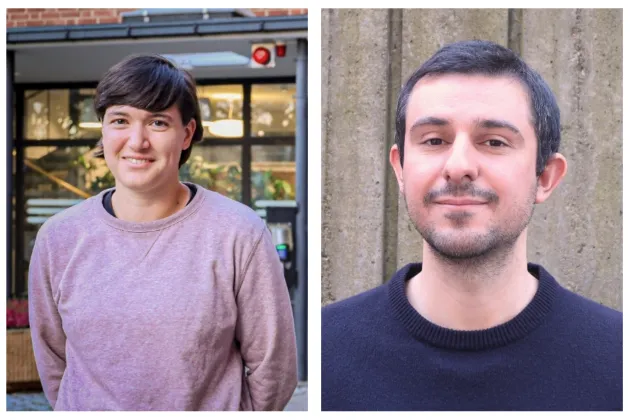Light and materials

More efficient solar cells that are ultra-thin and flexible. Cleaner fuel that uses light to convert carbon dioxide into carbon monoxide. These are examples of discoveries that show how knowledge of light and materials can create new, more sustainable products for the future.
Advanced basic research
With the expertise available at Lund Laser Centre (LLC), NanoLund and MAX IV, researchers are now able to study materials at a very detailed level and gain insights into processes and functions that were previously impossible to study. This will enable us to understand even more about materials and the building blocks of the natural world.
Researchers in this profile area:
- work with light, using lasers and synchrotron light sources to study materials
- construct advanced materials, even with atomic precision
- use advanced equipment and techniques to study materials
- study very fast time scales, both within individual atoms and in different materials.
Researchers can, for example, reveal entirely new information about how charge carriers such as electrons behave in time and space. Researchers are also carrying out advanced studies of biological systems and examining the composition of different types of materials. New materials and detection methods will enable researchers to address many of the current and future challenges in quantum technologies, energy systems and medicine.
Collaboration areas
Researchers aim to develop new materials, appliances and methods to address important challenges facing industry and society. The results of advanced basic research in this profile area will be used for development in the following areas:
Using advanced imaging of biological matter, living cells and tissues, researchers can investigate biological phenomena’s, disease causes, and test new clinical applications. This will enable the development of new diagnostic methods and more effective, personalised therapies.
By designing and creating advanced materials with atomic precision, researchers can work with industry to create smarter electronics and new optoelectronics.
This will also enable more efficient ways of transferring, storing and using energy, as well as the development of new photocatalytic systems - that is, materials that are specifically designed to facilitate chemical reactions driven by light.
Researchers are using lasers, nanosensors and new materials to gain new insights into diagnostics and remote sensing. This knowledge will make it easier to monitor pollination, control pests in agriculture and help limit the spread of deadly diseases.
Researchers will also be able to produce new environmentally friendly fuels and solutions that will give us cleaner water and reduce our use of environmental toxins.
Research environments
The following links are to other websites.
Profile area at LU
Light and materials is one of five profile areas at Lund University. The area's unique research aims to improve people's lives and solve global problems.
Coordinator
Tönu Pullerits
Professor of Chemical Physics
Phone: +46 46 222 81 31
tonu [dot] pullerits [at] chemphys [dot] lu [dot] se (tonu[dot]pullerits[at]chemphys[dot]lu[dot]se)
Research Coordinator
Christine Schmiege
Phone: 046-222 77 36
Mobile: 0725-25 18 90
christine.schmiege@kilu.lu.se
Website
Research database
Related researchers, projects and publications.
Latest news in light and materials

Elegant solution for measuring ultrashort laser pulses discovered

SEK 30 million awarded for research on ultrashort laser pulses and quantum mechanics
